That was quick
Well yeah, this was a very fun thing to build, and I hope you guys have fun with this too.
Controls
AG1: Spoilers (activates on ground)
AG2-AG4: lights
AG5: Open front left door (only opens when you are idle)
AG6: Pushback
AG8: Master switch (engines, lights, etc.)
Catastrophe at O'Hare
Quick facts
Aircraft: Douglas DC-10-10 (NOT a -30) registered N110A
powered by three General Electric CF6-6D engines, one on each wing and one on the vertical stabilizer.

The aircraft involved
Souls on board:
Capt. Walter Lux (Age 53)
F.O James Dillard (Age 49)
F.E Alfred Udovich (Age 56)
In all, 273 occupants are aboard on flight 191.
The actual flight
The routine takeoff was pretty normal at first. But at takeoff speed (V1,) the left engine (Number 1 engine,) 3 feet of the leading edge, and its pylon separated from the aircraft, flipped backward, and landed on the runway.
Robert Graham, supervisor of American Airlines, stated:
As the aircraft got closer, I noticed what appeared to be vapor or smoke of some type coming from the leading edge of the wing and the number-one engine pylon. I noticed that the number-one engine was bouncing up and down quite a bit and just about the time the aircraft got opposite my position and started rotation, the engine came off, went up over the top of the wing, and rolled back down onto the runway... Before going over the wing, the engine went forward and up just as if it had lift and was actually climbing. It didn't strike the top of the wing on its way; rather, it followed the clear path of the airflow of the wing, up and over the top of it, then down below the tail. The aircraft continued a fairly normal climb until it started a turn to the left. And at that point, I thought he was going to come back to the airport.
Sadly, what was said in the cockpit in the 50 or so seconds leading up to the final impact is not known as the CVR cut off as the engine separated. The last seconds of the recording is a loud thump and the F.O shouting "Damn!"
A flight recorder
n addition to the engine's failure, several related systems failed. The number-one hydraulic system, powered by the number-one engine, also failed but continued to operate through motor pumps that mechanically connected it to hydraulic system three. Hydraulic system three was also damaged and began leaking fluid but maintained pressure and operation until impact. Hydraulic system two was undamaged. The number-one electrical bus, whose generator was attached to the number-one engine, failed, as well, causing several electrical systems to go offline, most notably the captain's instruments, his stick shaker, and the slat disagreement sensors. A switch in the overhead panel would have allowed the captain to restore power to his instruments, but it was not used. The flight engineer might have reached the backup power switch (as part of an abnormal situation checklist—not as part of their takeoff emergency procedure) to restore electrical power to the number-one electrical bus. That would have worked only if electrical faults were no longer present in the number-one electrical system. To reach that backup power switch, the flight engineer would have had to rotate his seat, release his safety belt, and stand up. Regardless, the aircraft did not get any higher than 350 feet (110 m) above the ground and was only in the air for 50 seconds between the time the engine separated and the moment it crashed; time was insufficient to perform such an action. In any event, the first officer was flying the airplane, and his instruments continued to function normally.
The aircraft climbed to about 325 feet (100 m) above ground level while spewing a white mist trail of fuel and hydraulic fluid from the left wing. The first officer followed the flight director and raised the nose to 14°, which reduced the airspeed from 165 knots (190 mph; 306 km/h) to the takeoff safety airspeed (V2) of 153 knots (176 mph; 283 km/h), the speed at which the aircraft could safely climb after sustaining an engine failure.
The engine separation severed the hydraulic fluid lines that controlled the leading-edge slats on the left wing and locked them in place, causing the outboard slats (immediately left of the number-one engine) to retract under air load. The retraction of the slats raised the stall speed of the left wing to about 159 knots (183 mph; 294 km/h), 6 knots (6.9 mph; 11 km/h) higher than the prescribed takeoff safety airspeed (V2) of 153 knots. As a result, the left wing entered a full aerodynamic stall. With the left wing stalled, the aircraft began banking to the left, rolling over onto its side until it was partially inverted at a 112° bank angle (as seen in the Laughlin photograph) with its right wing over its left wing.
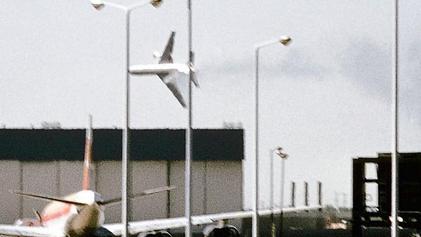
The famous last moment photo of flight 191
Since the cockpit had been equipped with a closed-circuit television camera positioned behind the captain's shoulder and connected to view screens in the passenger cabin, the passengers may have witnessed these events from the viewpoint of the cockpit as the aircraft dove towards the ground. Whether the camera's view was interrupted by the power loss from the number-one electrical bus is not known. The aircraft eventually slammed into a field around 4,600 feet (1,400 m) from the end of the runway. Large sections of aircraft debris were hurled by the force of the impact into an adjacent trailer park, destroying five trailers and several cars. The DC-10 had also crashed into an old aircraft hangar at the edge of the airport at the former site of Ravenswood Airport, which was used for storage. The aircraft was destroyed by the impact force and ignition of a nearly full load of 21,000 US gallons (79,000 l; 17,000 imp gal) of fuel; no sizable components other than the engines and tail section remained.
In addition to the 271 people on board the aircraft, two employees at a nearby repair garage were killed, and two more were severely burned. The crash site is a field located northwest of the intersection of Touhy Avenue (Illinois Route 72) and Mount Prospect Road on the border of the suburbs of Des Plaines and Mount Prospect, Illinois.

Flight 191 after impact
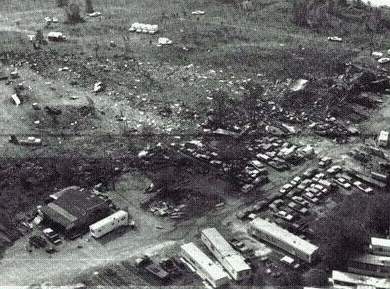
Crash site of AA191.
Cause of the accident
Witnesses to the crash were in universal agreement that the aircraft had not struck any foreign objects on the runway. In addition, no pieces of the wing or other aircraft components were found along with the separated engine, other than its supporting pylon; this would lead investigators to conclude that nothing else had broken free from the airframe and struck the engine. Hence, the engine/pylon assembly separation could only have resulted from a structural failure. The cockpit instrument panels were damaged so badly that they did not provide any useful information.
During the investigation, an examination of the pylon attachment points revealed some damage done to the wing's pylon mounting bracket that matched the bent shape of the pylon's rear attachment fitting. This meant that the pylon attachment fitting had struck the mounting bracket at some point. This was important evidence, as the only way the pylon fitting could strike the wing's mounting bracket in the observed manner was if the bolts that held the pylon to the wing had been removed. The engine/pylon assembly was supported by something other than the aircraft itself. Therefore, investigators could now conclude that the observed damage to the rear pylon mount had been present before the crash occurred rather than being caused by it.
AA191's engine pylon
The NTSB determined that the damage to the left-wing engine pylon had occurred during an earlier engine change at the American Airlines aircraft maintenance facility in Tulsa, Oklahoma, between March 29 and 30, 1979.? On those dates, the aircraft had undergone routine service, during which the engine and pylon had been removed from the wing for inspection and maintenance. The removal procedure recommended by McDonnell-Douglas called for the engine to be detached from the pylon before detaching the pylon itself from the wing. However, American, as well as Continental Airlines and United Airlines, had developed a different procedure that saved about 200 working hours per aircraft and "more importantly from a safety standpoint, it would reduce the number of disconnects (of systems such as hydraulic and fuel lines, electrical cables, and wiring) from 79 to 27.? This new procedure involved the removal of the engine and pylon assembly as a single unit rather than as individual components. United's implementation involved the use of an overhead crane to support the engine/pylon assembly during removal and re-installation. The method chosen by American and Continental relied on supporting the engine/pylon assembly with a large forklift.
The findings of the investigation by the NTSB were released on December 21, 1979:
The National Transportation Safety Board determines that the probable cause of this accident was the asymmetrical stall and the ensuing roll of the aircraft because of the uncommanded retraction of the left wing outboard leading edge slats and the loss of stall warning and slat disagreement indication systems resulting from maintenance-induced damage leading to the separation of the No. 1 engine and pylon assembly at a critical point during takeoff. The separation resulted from damage caused by improper maintenance procedures, which led to the failure of the pylon structure. Contributing to the cause of the accident were the vulnerability of the design of the pylon attachment points to maintenance damage; the vulnerability of the design of the leading-edge slat system to the damage which produced asymmetry; deficiencies in Federal Aviation Administration surveillance and reporting systems, which failed to detect and prevent the use of improper maintenance procedures; deficiencies in the practices and communications among the operators, the manufacturer, and the FAA, which failed to determine and disseminate the particulars regarding previous maintenance damage incidents; and the intolerance of prescribed operational procedures to this unique emergency.
Sources:
Notes
-This post was very fun to build. idk why
-I used actual reshade for this, because of windows. I just messed around with the effects and some of them were really goofy!
-I also added those sesor thingies on the nose. Looks cool😀
HAPPY FLYING!
Specifications
General Characteristics
- Successors 36 airplane(s) +350 bonus
- Created On Windows
- Wingspan 165.4ft (50.4m)
- Length 181.7ft (55.4m)
- Height 59.0ft (18.0m)
- Empty Weight N/A
- Loaded Weight 136,399lbs (61,869kg)
Performance
- Power/Weight Ratio 1.363
- Horse Power/Weight Ratio 0.01
- Wing Loading 29.0lbs/ft2 (141.7kg/m2)
- Wing Area 4,700.5ft2 (436.7m2)
- Drag Points 25700
Parts
- Number of Parts 585
- Control Surfaces 9
- Performance Cost 3,241

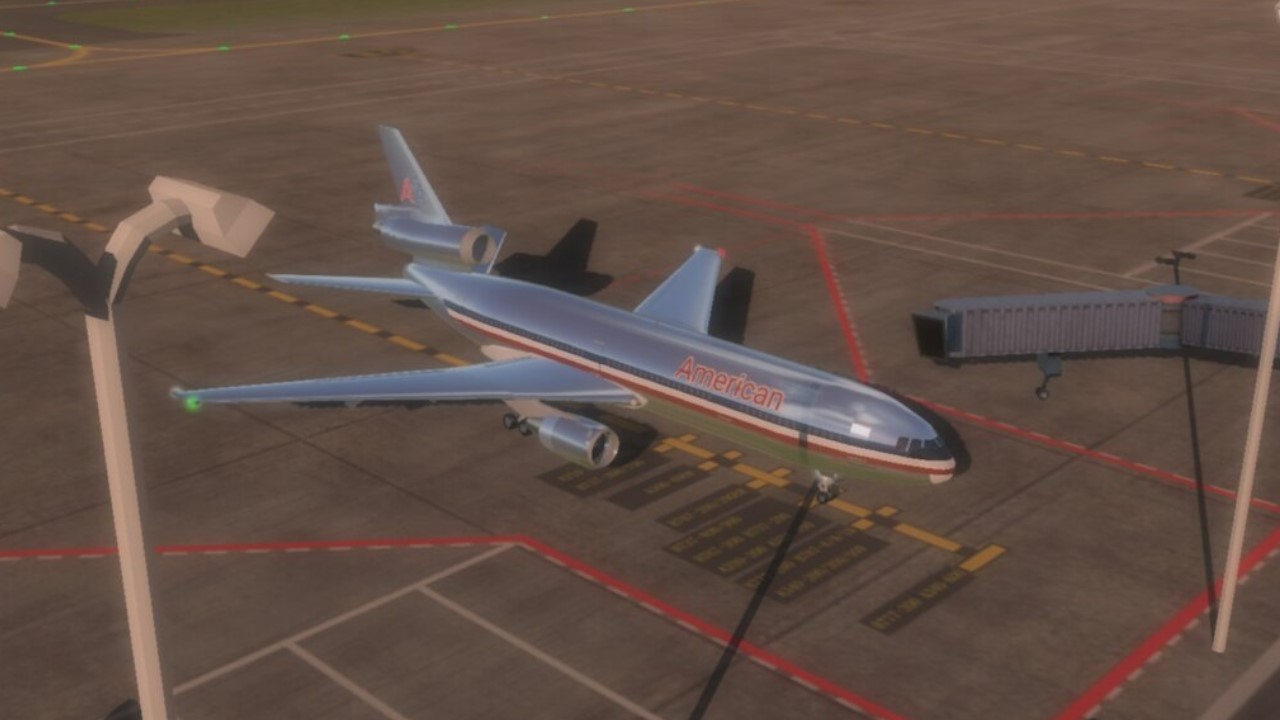
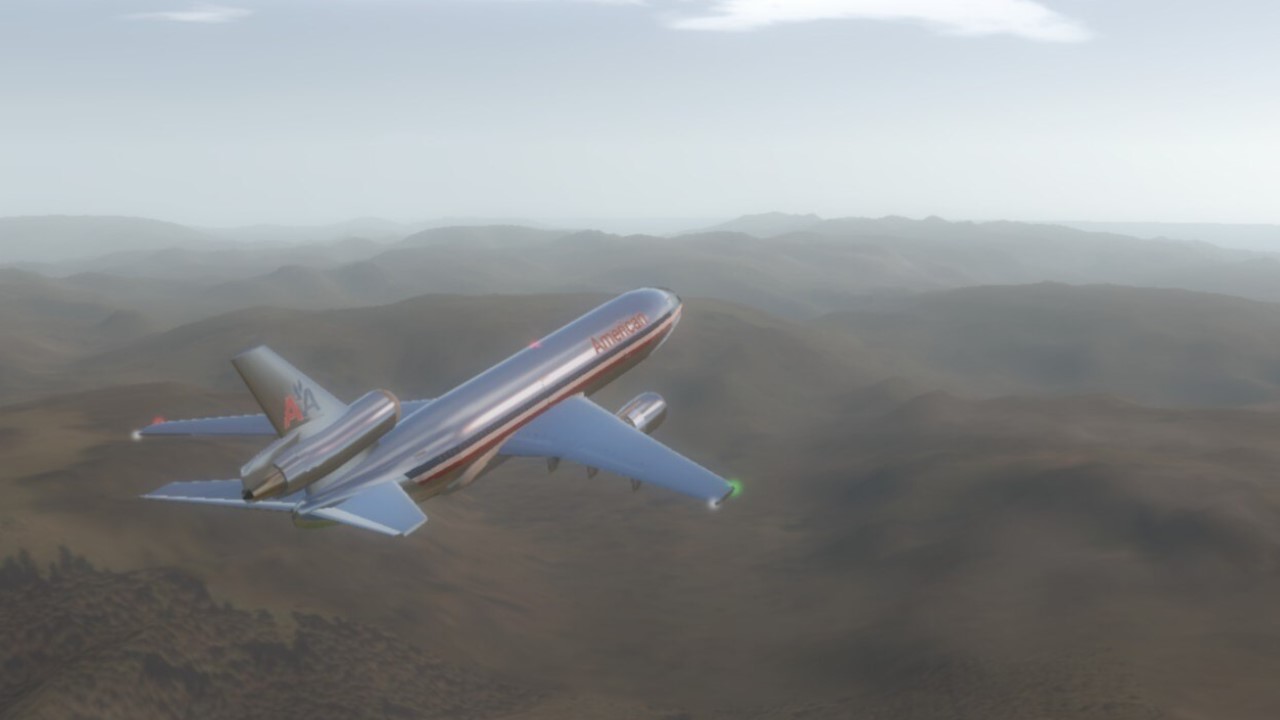
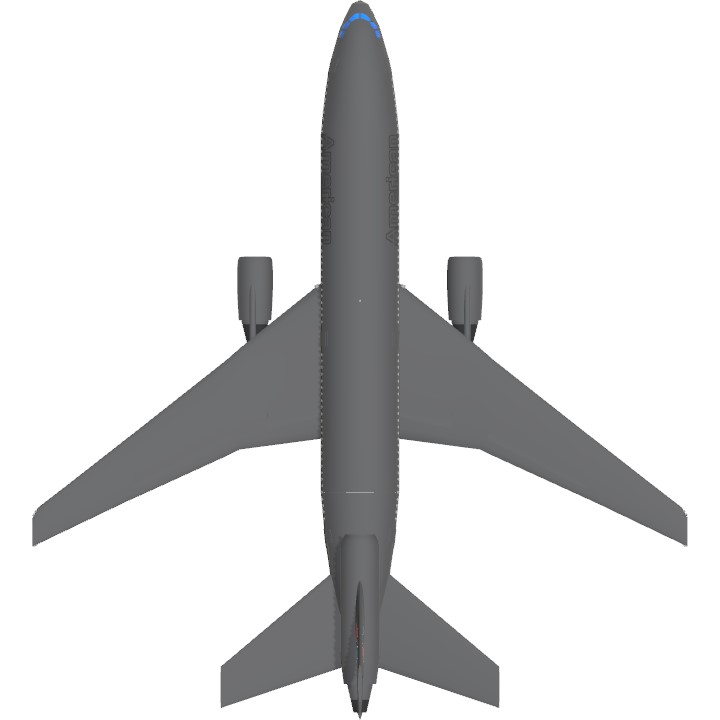
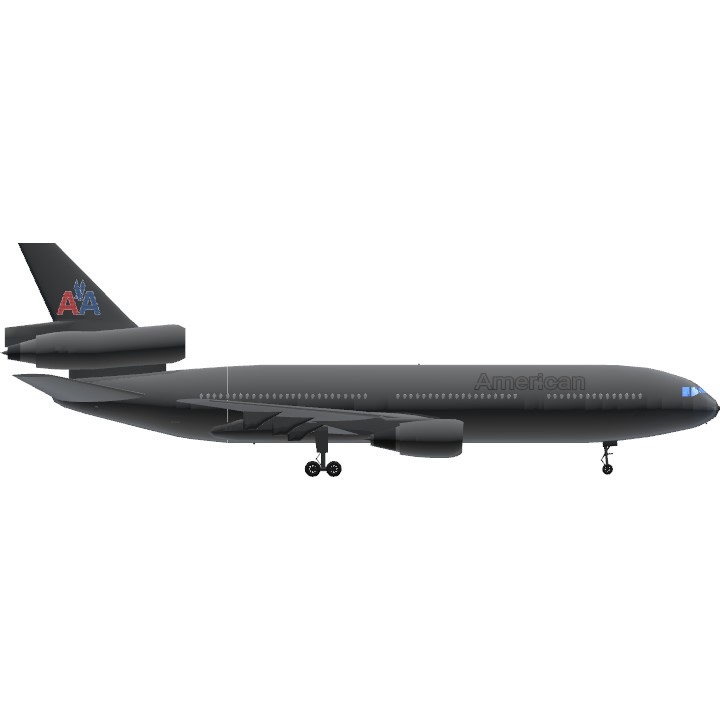
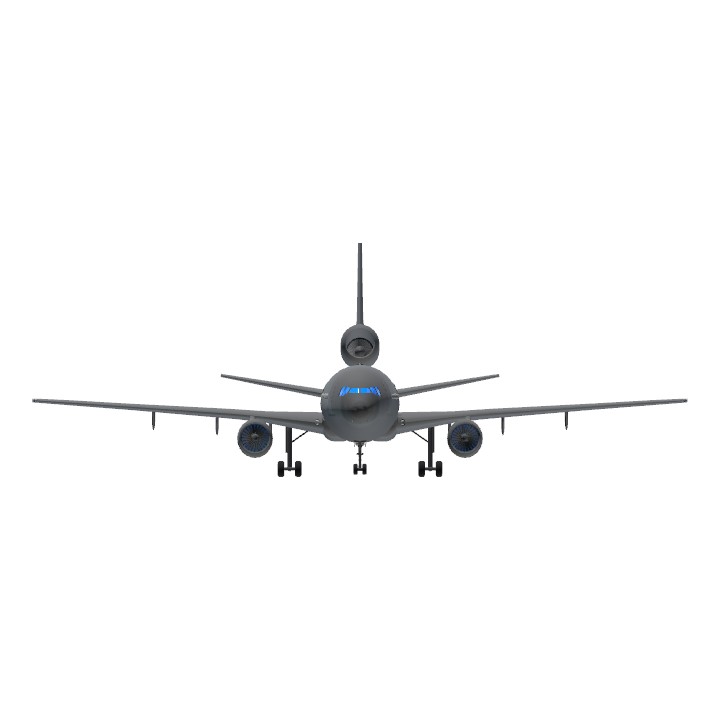
Final tag:
@boom1738
Tags:
@NormalShipsAndPlanesFan
@KangIntel
@0k
Tags:
@CL125
@PinnicaleAirlines3701
@Nerfaddict
Tags:
@Bryan5
@RepublicOfCursedPlanes
@U2
Credits
@GalacticaAsia's DC-10-30
@LM0418 I thought the screen shot was a irl photo bro🥀🥀
The Crowd Killer.
It's okay, but there's no backpushing
I wonder what Happened today which is related towards this build…
Excellent work
Cool Livery!
@crazyplaness well that’s what livery making is
Masterpiece 👌
All these facts look like they were extracted from that episode, good job on the description
Just saw an episode of air disasters on this crash, realized the plane had a more troubled history than I thought.
Did you know that American Airlines iwjnwjw had an engine that includes nitro to kill the passengers?
@LM0418 I had to look at the plane to realise your right
@Protogen201578 wdym all the engines are there
U forgot the 2 engines by the tail fins/on the tail fins but still cool
@Salah001 yes indeed
This DC-10 Was In Home Alone In The Decade 1990s
@Nick2239 check the successors, there’s already one
Can you make engine 1 detachable?
@MullerDude that is 100% faccs
Air Afrique Flight 056
Air France Flight 4590
American Airlines Flight 96
American Airlines Flight 102
American Airlines Flight 191
1983 Anchorage runway collision
Continental Airlines Flight 603
Cubana de Aviación Flight 1216
Turkish Airlines Flight 981
United Airlines Flight 232
National Airlines flight 27
and so on
Dc-10
(Death Coffin-10)